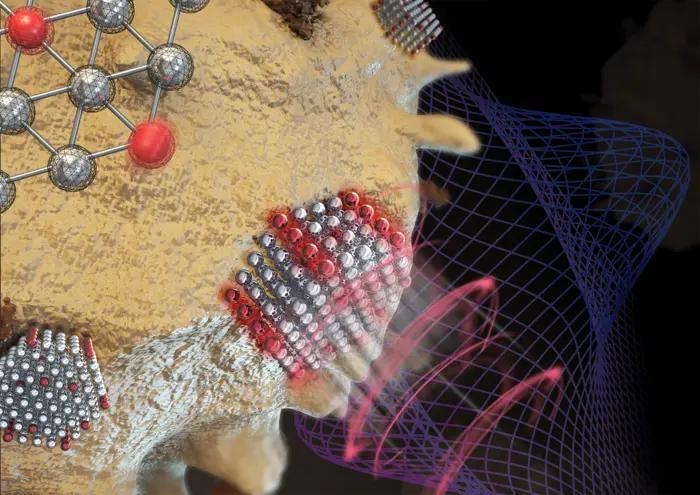A groundbreaking study published in Nature Photonics by researchers from Beihang University in China, RMIT University, and other leading institutions, such as the Australian National University and the University of Technology Sydney, have discovered an innovative method to measure extremely minute forces at the nanoscale in water, expanding scientists' comprehension of the microscopic world.
 Super-resolved photonic force microscopy for detecting ultra-weak interaction forces between nanoparticles and surfaces. Image Credit: Lei Ding
Super-resolved photonic force microscopy for detecting ultra-weak interaction forces between nanoparticles and surfaces. Image Credit: Lei Ding
With the use of a super-resolved photonic force microscope (SRPFM), the new method can measure forces in water as small as 108.2 attonewtons, which is similar to weighing a virus.
Professor Fan Wang, lead researcher at Beihang University, explained that the key to this ultra-sensitive measurement was the utilization of lanthanide-doped nanoparticles caught by optical tweezers and then utilized to explore the minute forces at play within biological systems.
Understanding these tiny forces is crucial for the study of biomechanical processes, which are fundamental to the workings of living cells. Until now, measuring such small forces with high precision in a liquid environment was a significant challenge due to factors like probe heating and weak signal issues.
Fan Wang, Study Lead Researcher and Professor, Beihang University
Wang and his colleagues created the SRPFM approach, which tackles these issues by utilizing modern nanotechnology and computational techniques.
The team uses neural network-powered super-resolution localization to accurately detect how minuscule forces move nanoparticles inside a fluid medium.
Dr Lei Ding, the study’s co-first author from RMIT University, stated that this innovation improves the resolution and sensitivity of force measurements and reduces the energy required to trap the nanoparticles, potentially lowering harm to biological samples.
Our method can detect forces down to 1.8 femtonewtons per square root of the bandwidth, which is near the theoretical limit imposed by thermal noise.
Dr Lei Ding, Study Co-First Author and Research Assistant, Beihang University
The ramifications of this study are enormous, stated Dr Xuchen Shan, co-first author from Beihang University.
By providing a new tool to measure biological events at the molecular level, this technique could revolutionize our understanding of a host of biological and physical phenomena.
Dr Xuchen Shan, Study Co-First Author, RMIT University
This encompasses anything from understanding how proteins operate within human cells to developing novel strategies for early disease detection.
The study additionally explored how this technology could be used to measure electrophoresis forces acting on single nanoparticles and the interaction forces between DNA molecules and interfaces, which are critical for developing sophisticated biomedical engineering techniques.
The team’s findings pave the way for new scientific discoveries and may also be used to produce new nanotechnological tools and improve the sensitivity of biomedical diagnostics.
Journal Reference:
Shan, X., et. al. (2024) Sub-femtonewton force sensing in solution by super-resolved photonic force microscopy. Nature Photonics. doi:10.1038/s41566-024-01462-7